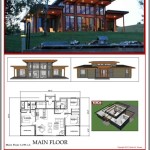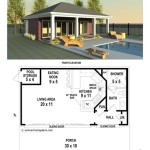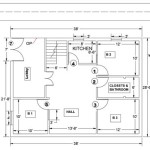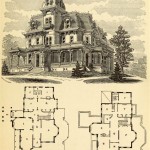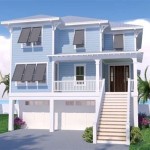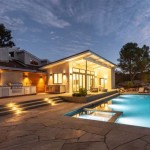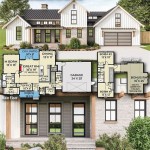Gothic Style House Plans: A Comprehensive Overview
Gothic style house plans evoke a sense of grandeur, mystery, and historical significance. These designs, inspired by the architectural movement that flourished in Europe during the medieval period, offer a unique aesthetic characterized by pointed arches, intricate detailing, and a vertical emphasis. While true Gothic structures might be impractical for modern living, contemporary house plans often incorporate Gothic elements to create a distinctive and visually striking home.
Understanding the core elements of Gothic architecture is crucial for appreciating and implementing Gothic style house plans. The style emerged from Romanesque architecture and was prevalent from the 12th to the 16th centuries. Its initial purpose was primarily within religious buildings, allowing for larger and brighter interiors compared to the earlier, more fortified Romanesque churches. Key features were developed to achieve this, which can be translated into residential design in varying degrees.
Key Feature 1: The Pointed Arch and Vaulted Ceilings
The pointed arch is arguably the most recognizable feature of Gothic architecture. It possesses greater structural strength than the rounded arch, allowing for taller and wider openings. In house plans, pointed arches can be incorporated in windows, doorways, and even as decorative elements within the interior. Consider incorporating arched transoms above windows or entryways to subtly introduce this feature. For more ambitious designs, interior archways connecting rooms or even vaulted ceilings can create a dramatic Gothic effect.
Vaulted ceilings, another hallmark of Gothic architecture, were developed to distribute the weight of the roof more efficiently, enabling larger and more open spaces. While a full-fledged vaulted ceiling might be costly and complex to implement in a residential setting, simpler variations can be achieved. Groin vaults, rib vaults, and fan vaults are all options, though simplified and stylized versions are more common in modern Gothic-inspired homes. Exposed beams that mimic the ribs of a Gothic vault can also provide a similar aesthetic at a lower cost. Strategic lighting placement can further enhance the impact of these ceiling features, highlighting their shape and texture.
When incorporating pointed arches and vaulted ceilings, careful attention must be paid to scale and proportion. Overly large or ornate arches can overwhelm a smaller space, while poorly proportioned vaults can appear awkward. Consulting with an architect or designer experienced in Gothic or Gothic Revival styles is highly recommended to ensure that these features are seamlessly integrated into the overall design.
Key Feature 2: Stained Glass and Ornate Windows
Stained glass is another defining feature of Gothic architecture, traditionally used to depict religious scenes and to flood interior spaces with colored light. While replicating intricate stained-glass windows might be expensive, incorporating simpler stained-glass panels or borders into windows can add a touch of Gothic elegance. Clear leaded glass, with its geometric patterns, can also evoke a similar feeling without the cost of fully colored stained glass.
Beyond stained glass, the design of the windows themselves is crucial. Tall, narrow windows with pointed arches are typical of the Gothic style. Mullions and tracery, the stone or wood dividers within the window frame, add further detail and visual interest. Consider incorporating these elements into window designs to enhance the Gothic aesthetic. Oriel windows, projecting from the wall and supported by brackets, can also add a unique and dramatic touch. Bay windows, offering wider views and increased natural light, can be adapted with Gothic-inspired detailing.
The placement of windows is also important. Gothic architecture often features large, prominent windows to maximize natural light. Strategic placement of these windows can dramatically alter the ambiance of a room, creating a sense of openness and grandeur. South-facing windows can capture sunlight throughout the day, while strategically placed east or west-facing windows can provide dramatic morning or evening light. Considering the orientation of the windows in relation to the surrounding landscape is also important to maximize views and privacy.
Key Feature 3: Stone and Masonry Detailing
Stone and masonry detailing are integral to Gothic architecture, providing both structural support and visual ornamentation. While using solid stone construction might be impractical for many modern homes, incorporating stone veneer or brick cladding can create the impression of a more substantial and historically inspired structure. Consider using rough-hewn stones or bricks to enhance the rustic and timeless feel of the design.
Gargoyles, grotesques, and other sculpted elements are common features of Gothic architecture. While incorporating full-sized gargoyles might be excessive for a residential setting, smaller decorative elements can add a touch of whimsy and character. Consider adding sculpted details around doorways, windows, or rooflines. Quatrefoils, trefoils, and other geometric shapes are also commonly used in Gothic ornamentation and can be incorporated into railings, trim, and other decorative elements.
The use of vertical lines is also crucial to conveying a Gothic aesthetic. Emphasize vertical elements in the design, such as tall columns, pointed gables, and steeply pitched roofs. Board and batten siding can also be used to create a vertical emphasis, mimicking the look of timber framing. Consider using darker colors for the exterior to further enhance the dramatic and imposing nature of the Gothic style. Contrasting trim colors can be used to highlight architectural details and create visual interest.
Furthermore, consider the landscaping surrounding the house. Formal gardens with symmetrical layouts and geometric patterns can complement the Gothic aesthetic. Stone pathways, fountains, and sculptures can further enhance the sense of grandeur and history. Planting climbing vines and creepers along the walls can also add a touch of romance and mystery, softening the hard edges of the stone and masonry.
Interior design considerations are equally important. Dark, rich colors, such as deep reds, greens, and blues, are commonly used in Gothic interiors. Heavy fabrics, such as velvet and brocade, can add a sense of luxury and opulence. Antique furniture, tapestries, and ornate lighting fixtures can further enhance the historical feel. Incorporating religious or historical artifacts can also add a personal touch and further emphasize the Gothic theme.
Lighting plays a crucial role in creating the desired atmosphere. Dim, ambient lighting can enhance the sense of mystery and drama. Chandeliers, sconces, and table lamps with dark shades can provide soft, diffused light. Consider using colored light bulbs to create a more dramatic effect. Fireplaces, both real and electric, can also add warmth and ambiance to a Gothic-inspired interior.
Modern adaptations of Gothic style house plans often incorporate these traditional elements with contemporary building techniques and materials. This allows for the creation of homes that are both aesthetically pleasing and functional for modern living. The key is to find a balance between historical accuracy and modern convenience, creating a space that is both beautiful and livable. Working with a qualified architect or designer is essential to ensure that the design is both structurally sound and visually appealing.
Ultimately, Gothic style house plans offer a unique opportunity to create a home that is both visually stunning and historically inspired. By carefully considering the key elements of Gothic architecture and adapting them to modern building practices, it is possible to create a home that is truly one-of-a-kind.

Gothic Revival House Plans Google Search Victorian Vintage Floor

Gothic Revival Style Christine Huckins Franck Architect Llc House Vintage Plans Architecture

Charming Gothic Revival Cottage 1204 Sq Ft Architectural Designs 43002pf House Plans

58 Gothic Floor Plans Ideas Vintage House

The American Gothic 1509 4 Bedrooms And 3 Baths House Designers

Archi Maps Gothic House Victorian Plans Architecture

Gothic Revival House Plans Floor For Builders

9 Design Tips For Your Gothic Revival Inspired Home Archways Ceilings

Printed House Plans Stone Mansion Tudor Gothic Style Porches Towe Historic American Homes

58 Gothic Floor Plans Ideas Vintage House
Related Posts

